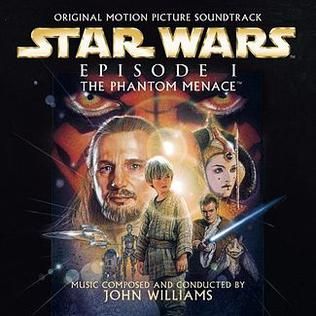
We all know what a trilogy is, right? Three parts, one big story. Think ‘Star Wars,’ which has actually grown to three trilogies these days, though many of us still fondly recall the original. Or ‘The Lord of the Rings,’ an epic saga meticulously planned from its book origins. Then there’s ‘The Hobbit,’ which, well, that was one book that became a not-so-great trilogy of movies. But what truly defines a trilogy? Must it be meticulously planned from day one, or can it organically emerge from any film that simply spawned two sequels? The answer, as it turns out, is a fascinating mix.
For the purposes of our deep dive into the unexpected corners of cinematic history, we’re casting a wide net. We’re considering any purposeful grouping of three movies as a trilogy, whether they weave one grand, continuous narrative, present three distinct stories in sequence, or are united by the subtle, overarching thematic vision of their filmmaker. Prepare to have your perceptions challenged and your movie night plans delightfully derailed, because we’re about to pull back the curtain on some films you likely had no idea were part of a larger, three-part story. Get ready to explore the hidden depths of your favorite (and perhaps not-so-favorite) film franchises, spotlighting surprising connections, forgotten sequels, and thematic threads that transform seemingly standalone movies into integral parts of a larger cinematic triptych.
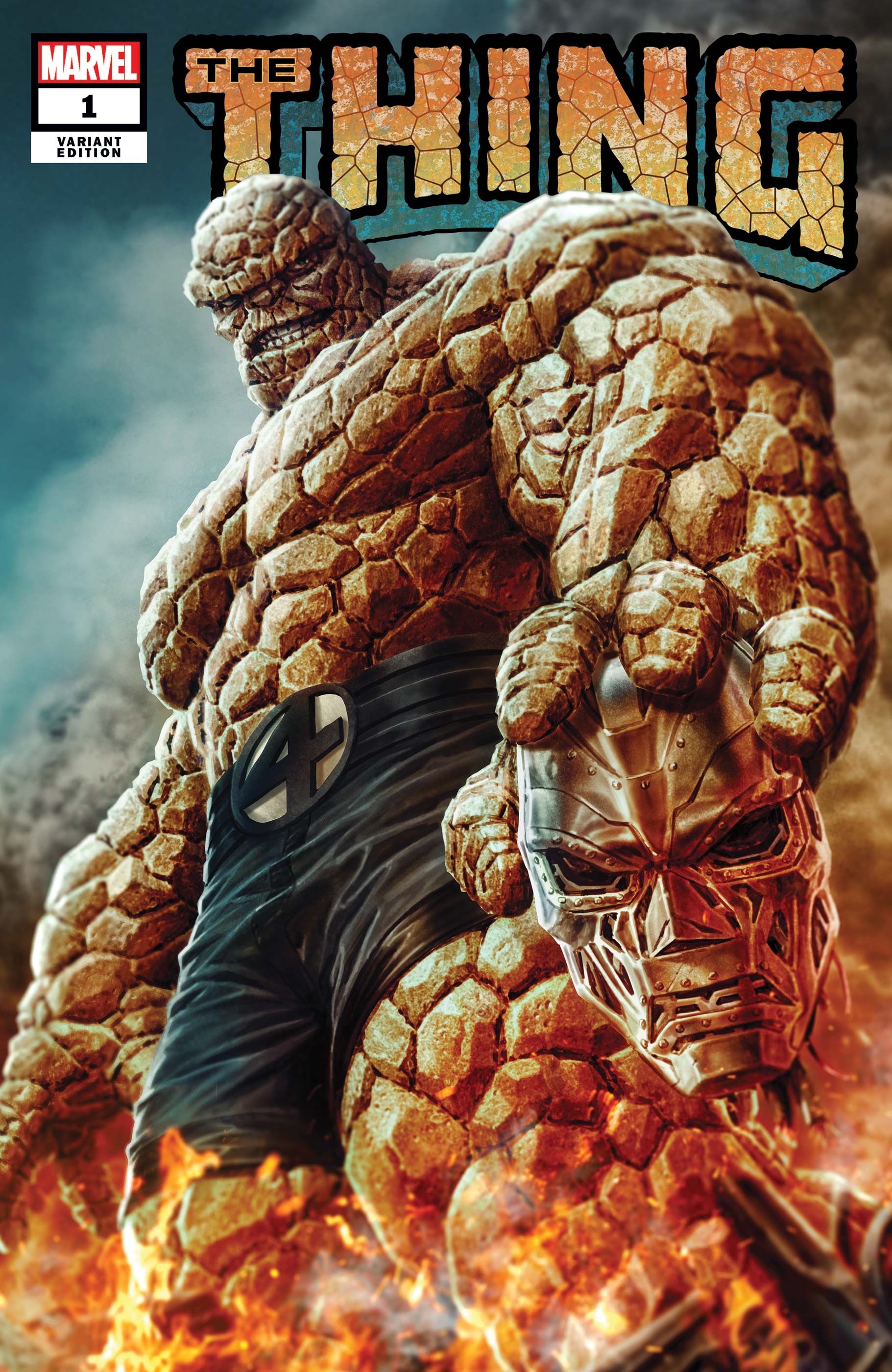
1. The Thing (The Apocalypse Trilogy)
John Carpenter’s “The Thing” is a horror classic, a masterclass in claustrophobic terror, and a film that has captivated audiences for decades with its chilling premise. It tells the story of an ill-fated research mission to Antarctica that stumbles upon an alien organism. This creature possesses the terrifying ability to perfectly imitate anyone, leading to a relentless and paranoia-inducing struggle where trust is shattered and survival is uncertain. What many viewers might not realize, however, is that this iconic film is not a standalone masterpiece, but rather the cornerstone of a much larger, thematically linked collection known as John Carpenter’s Apocalypse Trilogy.
Carpenter himself conceived of this trio of films as a season’s worth of nightmares, each brought to terrifying life through unique and unforgettable horror. While “The Thing” plunges us into the icy wastes and the dread of an unseen enemy among us, the trilogy expands far beyond its alien terror. These films, though narratively separate, are profoundly connected by Carpenter’s exploration of profound questions surrounding the problem of evil. They delve into the darkest corners of existence, asking what pure evil truly looks like, if it can ever be defeated, and if we would even recognize it when confronted directly.
The second film in this unsettling triptych is “Prince of Darkness,” a movie that takes a decidedly different, yet equally disturbing, approach to supernatural horror. Here, the Antichrist manifests as a glowing green liquid lurking in a church basement, while the devil himself makes an appearance as a hand glimpsed in a mirror. Adding to the film’s unsettling atmosphere, rock legend Alice Cooper delivers a memorably chilling performance as the scariest homeless man you’ve ever encountered on screen. “Prince of Darkness” further pushes Carpenter’s thematic questions about the nature of malevolence, shifting from the alien biological threat to a more ancient, cosmic evil.
Finally, “In the Mouth of Madness” rounds out the Apocalypse Trilogy, and many critics consider it to be perhaps the finest cinematic adaptation of the horror of H.P. Lovecraft, despite not being directly based on any of Lovecraft’s specific writings. This film immerses viewers in a world where reality itself unravels, driven by the disturbing works of a horror novelist whose fiction begins to bleed into the real world. It forces characters, and audiences, to confront the terrifying possibility that they might already be succumbing to madness without even realizing it, a truly horrifying thought that echoes the insidious nature of the entity in “The Thing.” Together, these three films pose profound and uncomfortable questions: What madness awaits the souls of those who resist evil? And what if, terrifyingly, we’ve already given in to its temptations without even being aware of our surrender? If you’re a Lovecraft enthusiast, or simply a fan of exquisitely crafted, claustrophobic horror, these thematically rich films are an absolute must-watch.

2. Shaun of the Dead (The Three Flavours Cornetto Trilogy)
When “Shaun of the Dead” first burst onto the scene, audiences were treated to a uniquely British take on the zombie apocalypse, brilliantly blending gruesome horror with laugh-out-loud comedy and a surprising amount of heart. This film ingeniously transforms a global undead catastrophe into an upbeat narrative centered around the enduring power of friendship between its leads, Simon Pegg and Nick Frost. What many viewers might not fully grasp is that this zombie-comedy classic is just the first scoop in a delicious, three-part ice cream treat: The Three Flavours Cornetto Trilogy.
This iconic trilogy earns its quirky name from a popular English ice cream, the Cornetto, and its films are distinctively linked. All three were expertly directed by Edgar Wright, who also co-wrote each script with star Simon Pegg, and feature both Pegg and Nick Frost. Despite tackling different genres and premises, they are united by Wright’s distinctive directorial style and a shared thematic core that explores the often-amusing, sometimes painful, difficulty a modern man faces in growing up and accepting adulthood.
The second installment, “Hot Fuzz,” veers sharply from zombie horror into gritty action, applying its tried-and-true formula to a small municipal police department nestled in the quaint English countryside. This film is deliciously weird, offering up an escalating series of absurd scenarios and explosive set pieces, all while maintaining a sharp wit. The characters, much like Shaun, initially act as though they’re living inside an action film fantasy, only to gradually awaken to the reality of a world with genuine consequences. It’s a hilarious send-up of action tropes that also manages to be a genuinely thrilling mystery.
Finally, “The World’s End” completes the trilogy, shifting gears once more to focus on a nostalgic pub crawl undertaken by a group of now-middle-aged high school buddies. What begins as a sentimental journey quickly spirals into chaos when their attempt to relive past glories is unexpectedly interrupted by a full-blown alien-robot invasion. This film poignantly captures the struggle of individuals who never truly moved on from their youth, particularly the rootless middle-aged goth portrayed by Pegg. It takes life-threatening circumstances, whether it’s an alien invasion or a zombie horde, to shake these men out of their emotionally arrested states and force them to confront the inevitable challenges of maturity.
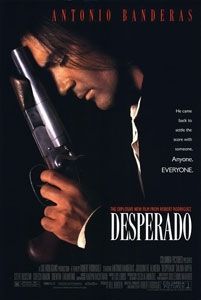
3. Desperado (The Mexico Trilogy)
When we talk about epic cinematic trilogies, our minds often jump to massive Hollywood productions, films that demand enormous budgets and the backing of major studios. However, Robert Rodriguez’s “Mexico Trilogy” stands as a remarkable exception, a testament to independent filmmaking and creative ingenuity. The series gained significant traction with its second installment, “Desperado,” a high-octane action flick that introduced Antonio Banderas to the role of the enigmatic mariachi. This film is often the most widely recognized of the three, but its origins lie in a much more humble, yet equally impactful, predecessor.
The journey began with “El Mariachi,” the inaugural film in the series. Made on a shoestring budget, “El Mariachi” proved that compelling storytelling and explosive action didn’t require a Hollywood-sized price tag. A fun fact for fans: Carlos Gallardo, who brilliantly portrayed the titular character in “El Mariachi,” actually makes a return appearance in “Desperado,” albeit in a different role, playing El Mariachi’s friend, Campa. You might also recognize Gallardo as Deputy Carlos from Rodriguez’s later film, “Planet Terror.”
“Desperado” itself became the undeniable high point of the series, replacing Gallardo with the charismatic Antonio Banderas in the lead role. This shift allowed the series to reach a broader audience while still retaining Rodriguez’s distinctive flair for stylized violence and inventive action sequences. The film solidified the “Mariachi” character as a formidable, guitar-case-wielding force of nature, driven by revenge and a cool, almost mythical aura. It perfectly encapsulated the raw energy and gritty charm that would become hallmarks of Rodriguez’s filmmaking style.
The final chapter in this thrilling trio is “Once Upon a Time in Mexico,” a film famously brought to life in an astonishingly short period of just seven weeks. This rapid production pace speaks volumes about Rodriguez’s DIY filmmaking techniques. Rather than being a strictly cohesive narrative continuation, it felt more like a “fun experiment,” further cementing Rodriguez’s reputation for unconventional, yet engaging, cinema. Rodriguez often utilizes his ranch in Texas as a film studio and opts for digital replacements for physical props. The Mexico Trilogy stands as a powerful demonstration that awesome shoot-’em-up action movies can be crafted for a mere fraction of typical Hollywood expenditures.
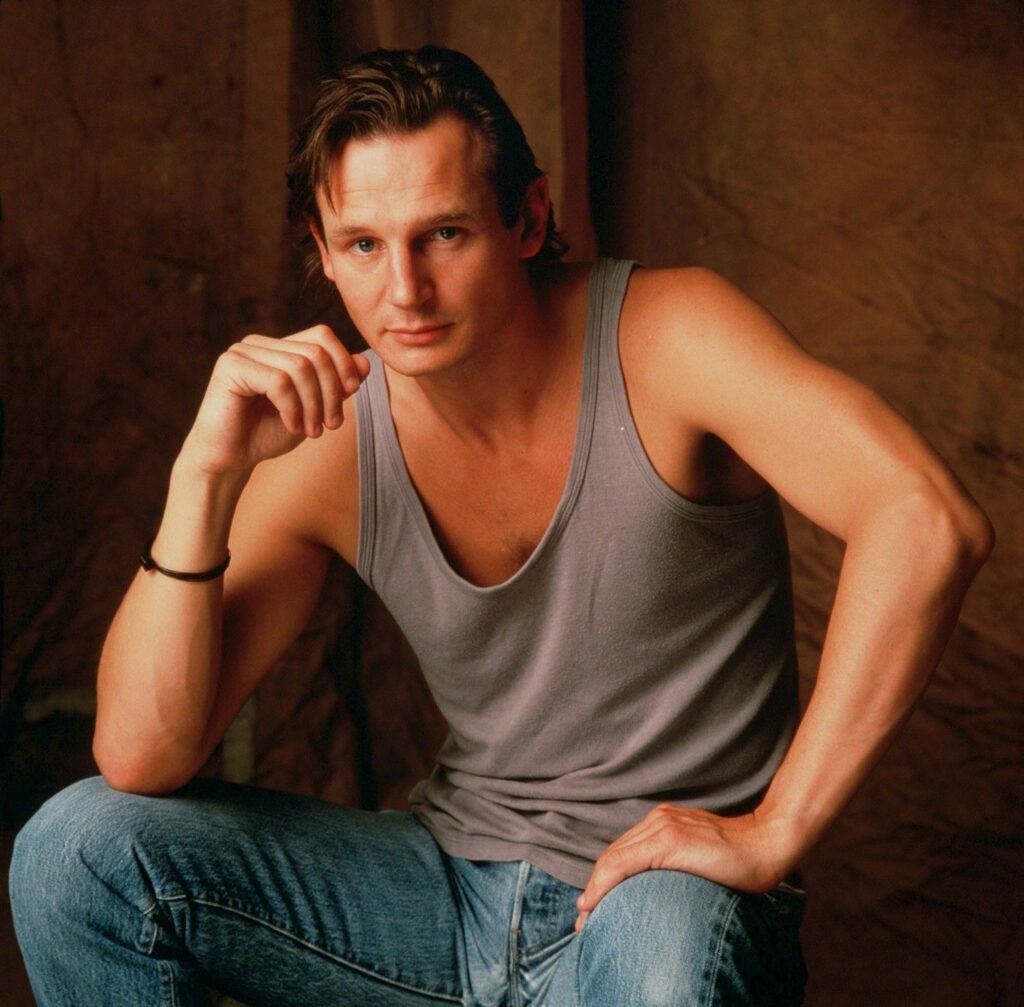
4. Darkman
Sam Raimi, a director renowned for his unique blend of horror, humor, and dynamic visual storytelling, showcased his cinematic genius with “Darkman.” This film takes what could easily be dismissed as a ludicrous premise – an ultra-violent antihero whose synthetic skin disintegrates in sunlight, essentially turning him into a vampire-esque figure – and transforms it into a pulpy, thoroughly palatable action-horror hybrid. “Darkman” was a groundbreaking entry, proving that a character defined by tragedy and grotesque disfigurement could still command the screen with a compelling, albeit dark, sense of justice. Liam Neeson’s intense portrayal as Dr. Peyton Westlake, before his face was almost entirely obscured by bandages and makeup, could have easily launched a full-blown cult following for the actor in a more visible role.
What many might not be aware of is that “Darkman” is technically the first part of a trilogy, though the quality unfortunately follows an inverse relationship with the sequel numbers. The original film’s unique tone and innovative visual style were difficult to replicate, and the subsequent entries struggled to capture the lightning-in-a-bottle brilliance of Raimi’s initial vision. The sequels, in a common pitfall for franchises, mistakenly amplified “Darkman’s” inherent absurdity rather than its sophisticated blend of horror, sci-fi, and tragic heroism, leading to a significant drop in critical and audience reception.
“Darkman II: The Return of Durant” saw a major change in the casting of its protagonist, with Arnold “The Mummy to Brendan Fraser” Vosloo stepping into Liam Neeson’s shoes. While a studio’s decision to substitute a fresh face for a star whose face was largely hidden for the original film might be understandable, Vosloo’s portrayal, though competent, couldn’t quite recapture Neeson’s raw intensity. However, a significant saving grace for the sequel was the return of the original villain, Robert G. Durant, once again played by the excellent Larry Drake, providing a much-needed link to the first film’s narrative and a familiar antagonist for Darkman to confront.
The trilogy was completed with “Darkman III: Die Darkman Die,” which continued the trend of casting new villains, with Jeff Fahey providing the antagonist for this final installment. These later entries in the Darkman series, much like the trajectory of the Tim Burton-produced, Joel Schumacher-directed Batman sequels, suffered from a significant shift in creative control. Sam Raimi, the visionary director of the original, moved into an executive producer role, and a competent, though bland, director was brought in to helm the sequels. While “Darkman” stands as a cult classic, its subsequent installments serve as a cautionary tale about the challenges of expanding a truly unique vision into a multi-film franchise.
Read more about: The Ultimate Ranking of Liam Neeson’s 15 Greatest Movies

5. The Addams Family Trilogy?
“The Addams Family” and its much-loved sequel, “Addams Family Values,” hold a special place in the hearts of many, revered for their pitch-perfect casting, macabre humor, and surprisingly heartfelt moments. “Addams Family Values,” in particular, is often lauded as one of those rare sequels that actually surpasses the original. Christopher Lloyd’s portrayal of a lovestruck Uncle Fester was nothing short of brilliant, truly stealing the show with his unlikely, yet endearing, romance with Debbie, played by the fantastic Joan Cusack. The film also delightfully juxtaposed the Addams’ morbid affectations against the saccharine, positivity-obsessed camp counselors Peter MacNicol and Christine Baranski, making the family’s eccentricities all the more appealing. So, with two such strong entries, a logical question arises: what about the third one?
The answer, for better or worse, lies in 1998’s “The Addams Family Reunion.” This film represents one of those peculiar cinematic anomalies: a truly bad movie that somehow still features the immensely talented Tim Curry. It’s a stark reminder that even the most gifted actors cannot always save a project plagued by fundamental flaws. While Tim Curry and Daryl Hannah stepped into the iconic roles of Gomez and Morticia, their performances, good as they were, simply couldn’t compete with the unforgettable chemistry and presence of the original duo, Raul Julia and Anjelica Huston. The other replacement cast members, unfortunately, fared even worse, contributing to a significant decline in the series’ charm and quality.
“The Addams Family Reunion” was, according to the context, another ABC Family-funded abomination, a direct-to-video effort that largely deserves its forgotten status. The plot itself presented a peculiar challenge: revolving around a bizarre ailment dubbed “Waltzheimer’s disease” that threatened to turn the Addamses “normal.” This premise fundamentally misunderstood the appeal of the Addams Family, whose charm lies precisely in their proudly unconventional nature. The idea of them becoming ordinary was less amusing and more profoundly unsettling, not in the delightful Addams way, but in a way that diluted their unique essence.
The challenge of making such a plot interesting would have been immense, even for the original, beloved cast. The core concept worked against the very spirit of the characters that audiences had grown to adore. The humor and heart that defined the first two films were largely absent, replaced by a narrative that felt forced and uninspired. It became clear that without the original creative vision and the irreplaceable ensemble, the magic of the Addams Family was difficult, if not impossible, to replicate. While “The Addams Family” technically stretches into a trilogy with “The Addams Family Reunion,” it serves as a powerful illustration that not all three-part groupings are created equal. Sometimes, a third installment can simply be a faint echo of past glories, best left in the dusty archives of forgotten films.
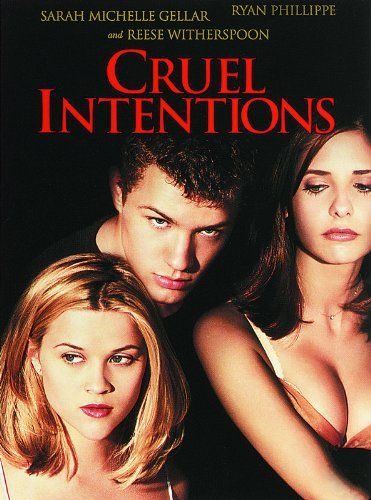
6. Cruel Intentions
While it might not quite live up to its acclaimed source material, the 18th-century novel *Dangerous Liaisons* by Pierre Choderlos de Laclos, *Cruel Intentions* truly remains a wildly entertaining teen film. It possesses a delightfully nasty streak, starring Ryan Phillippe’s memorable pout, Sarah Michelle Gellar’s wonderfully cheeky threats, Selma Blair’s charmingly goofy gullibility, and Reese Witherspoon’s sparkling innocence. This movie puts a distinctively ’90s spin on Pierre’s misanthropic tale, creating a cultural touchstone of its era.
Where else, one might ask, are you going to find step-siblings making a racy bet, a cross necklace full of cocaine, and a sapphic kiss that was literally award-winning? This film embraced its edgy themes with a vibrant energy, pushing boundaries in a way that resonated with its target audience. It cemented its place in pop culture, showcasing a daring and provocative narrative for the teen demographic.
Following the success of the movie, a *Cruel Intentions* TV series was actually shot and then abandoned. However, in a peculiar turn of events, it was allegedly re-edited with patched-in Skinemax-ready adult content and subsequently marketed as *Cruel Intentions 2*. Unsurprisingly, given its unusual development, this particular installment is widely considered to be very bad, diverging significantly from the original film’s charm and wit.
To make matters even more convoluted, *Cruel Intentions 3* arrived on the scene, essentially redoing the first *Cruel Intentions* but without the original cast or a comparable budget. It seemingly attempted to throw in some elements reminiscent of *Wild Things*, yet ultimately omitted what made either of those films worth watching. If you happened to catch the trailer for *Cruel Intentions 2*, you might have noticed a familiar face and thought, “Is that Golden Globe Winner Amy Adams, the talented star of *Julie and Julia* and *Arrival*?” Yes, it is, but perhaps it’s best to think more along the lines of Amy Adams from *The Wedding Date* and *Underdog* for context.
Read more about: The Ultimate Chill: 9 Celebrities Who Knew Their Own Tragic End Before It Happened
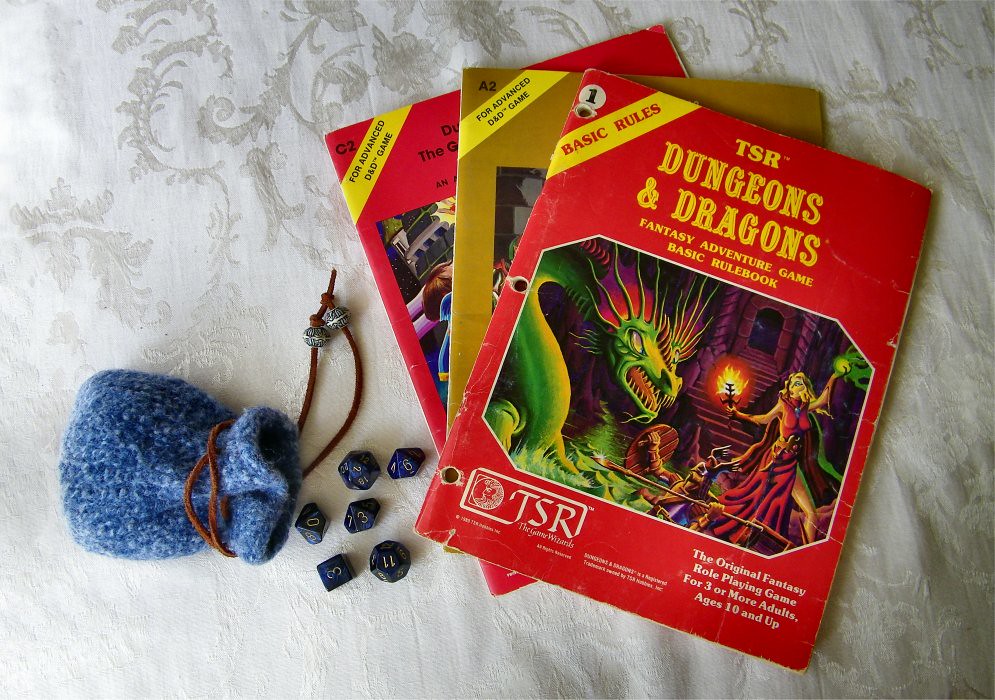
7. Dungeons and Dragons
There’s a common saying among fantasy enthusiasts that perhaps rings truer than most: friends don’t let friends watch the *Dungeons and Dragons* film trilogy. While a lot of the entries on our list begin with one genuinely good movie that then unfortunately leads to two less-than-stellar sequels, the *Dungeons and Dragons* cinematic journey, sadly, started on a rough note from its very first moment. It’s a classic example of a beloved property struggling to find its footing on the big screen.
The main problem with adapting *Dungeons and Dragons* into a movie, to begin with, lies in the very nature of its source material: it’s a tabletop roleplaying game. This means its enduring appeal is all about the setting, the character archetypes, and the intricate rules of how things work within its world, with no single ingrained story of its own. Gary Gygax’s groundbreaking game depends entirely upon the creative input of its players and the narrative skills of the Dungeon Masters who orchestrate the adventure for its continuing fascination.
You simply can’t just slap the iconic D&D brand on a generic knights-and-dragons fantasy film and expect to lure fantasy nerds out of their garages and into the theaters. In fact, the original *Dungeons and Dragons* movie has all the unfortunate hallmarks of a rather stale 1980s fantasy script that was merely dusted off and re-branded with minimal edits. Marlon Wayans plays the painfully stereotypical, and just generally painful, character Snails, while Jeremy Irons, despite his considerable dramatic heft, couldn’t save the film from its fundamental flaws.
And if you found the initial *Dungeons and Dragons* film to be a mess, the two direct-to-streaming sequels, 2005’s *Dungeons & Dragons: Wrath of the Dragon God* and 2012’s *Dungeons & Dragons: The Book of Vile Darkness*, certainly don’t offer any improvement. These later entries continued the trend of missing the mark, proving that simply adding more installments doesn’t equate to better quality. If you truly want to experience the magic and adventure of *Dungeons & Dragons*, your best bet is to gather some friends and actually play the game; the movies, regrettably, bring only pain.
Read more about: Who’s Still Bringing the Sunshine? Catching Up with the Enduring Cast of ‘Eight Is Enough’!
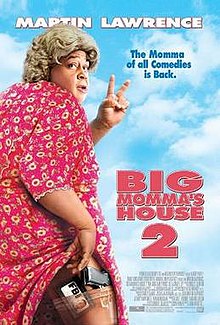
8. Big Momma’s House
Fans who fondly remember the originality and outrageousness of Martin Lawrence’s early ’90s stand-up act often struggle with his present-day persona, which has transformed into a more spiritually changed man. This shift prompts a fascinating question: what are we to make of Martin Lawrence’s post-*Bad Boys* infatuation with socially conscious wholesomeness and his penchant for sentimental message-peddling? On one hand, it’s genuinely commendable that he got his life in order.
On the other hand, a candid look back reveals that his movies, for many, were simply a lot better when he was still so wonderfully crazy. Remember *Runteldat*? Thanks, but we’d often prefer the unbridled comedic energy of his earlier work. This evolution in his career presents an interesting dilemma for long-time admirers, balancing respect for personal growth with nostalgia for a distinct comedic style.
*Big Momma’s House* and its direct sequel, *Big Momma’s House 2*, are, at their core, essentially retreads of *Mrs. Doubtfire*. They rely heavily on a rather flimsy “FBI man goes undercover — as an old lady!” gimmick. Taking perhaps one too many pages from the *Nutty Professor* section of Eddie Murphy’s career playbook, Lawrence has, somewhat controversially, donned a fat suit and played the stereotypical mammy character for cheap laughs three times over.
To his credit, Lawrence’s Big Momma does manage to beat Tyler Perry’s Madea at her own tired game in terms of comedic timing and energy. However, it still navigates territory that some find too close to minstrelsy for comfort, sparking ongoing discussions about representation and comedic choices. We can only hope that Brandon T. Jackson’s rather unfortunate turn in *Big Mommas: Like Father, Like Son* finally sealed the fate of this somewhat overwrought franchise, bringing an end to the increasingly thin premise.
Read more about: Beyond the Buzz: Unpacking the Real Reasons Martin Lawrence’s Presence Sparked Recent Concerns and Whispers
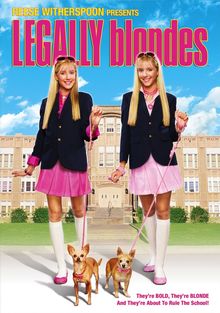
9. Legally Blonde
Unlike many of its seemingly empty-headed peers from the same era, *Legally Blonde* impressively rose above a tired premise. The initial concept, “Dumb sorority girl becomes a shrewd lawyer to impress — and intentionally marry — the normal-nosed Wilson brother? What will your team of irreverent geniuses dream up next, MGM?” might have seemed predictable. Yet, with a smart enough third act, the movie defied these jaded expectations and even undid much of the cinematic destruction caused by the truly clueless TV adaptation of *Clueless*, establishing its own unique identity and charm.
Then, as is often the case with successful films, came the sequels. *Legally Blonde 2: Red, White & Blonde* managed to retain its principal star, Reese Witherspoon, which is a significant factor. However, that was largely its sole saving grace. Everything from the rather bland Capitol Hill setting to Witherspoon’s, at times, tone-deaf getup – what, indeed, was that pink pillbox hat all about? – ultimately failed to impress both fans and critics. Without Witherspoon’s undeniable charisma, “Miss Woods Goes to Washington” would likely be deemed unwatchable, highlighting the star’s crucial role in its appeal.
(Can you tell where this is going?) The straight-to-DVD ABC Family movie, *Legally Blondes*, arrived to rehash the same tired blonde jokes, this time in a prep-school setting. Crucially, it lacked both Reese Witherspoon’s magnetic charisma and a halfway entertaining concept to distract us from its undeniably cash-grabby, one-dimensional nature. This particular movie, for many, ought to qualify as an act of psychic war, due to its sheer lack of original thought or genuine entertainment value.
Indeed, we’re genuinely surprised the filmmakers haven’t been sued for damages after inflicting such a creatively bankrupt installment upon audiences. It serves as a stark reminder that sometimes, even a beloved franchise can lose its sparkle when the creative vision and core talent aren’t consistently maintained, demonstrating that not every story needs to be, or should be, a trilogy.
Read more about: The Ultimate Roll Call: 14 Jennifers Who Are Absolutely Crushing It and Changing the World!
And there you have it! Our journey through the unexpected and often overlooked corners of cinematic history has revealed that some of the movies we thought were standalone gems or simple duologies were actually part of larger, three-part narratives. From the chilling depths of John Carpenter’s thematic nightmares to the quirky, ice cream-themed adventures of Edgar Wright, and even some less-than-stellar expansions of beloved comedies, these films remind us that the world of trilogies is far more expansive and surprising than most realize. So next time you’re settling in for a movie night, take a moment to wonder: is this truly the end, or is there a forgotten third act waiting to be discovered?



